Top 10 Best Apparel Brands In India 2023

Top 10 Apparel Brands In India 2023
The second-largest manufacturer of textiles and apparel in the world is India. It ranks seventh in the world for textile exports, including clothes, household goods, and technological products. The textile and apparel sector contributes 12% of exports, 13% of industrial production, and 2.3% of the nation’s GDP. A total of 45 million people work in the textile industry, including 3.5 million handloom workers. By 2025–2026, the Indian textile and apparel market is projected to increase at a 10% CAGR, totalling US$190 billion.
In 2020, the Indian apparel market was worth $40 billion USD; by 2025, it is predicted to be over USD 135 billion.
India has a competitive edge in terms of trained labour and production costs compared to other major textile producers. India exported $44.4 billion worth of textiles and apparel (including handicrafts) in FY22, a 41% YoY increase. In FY22, ready-to-wear garment exports, including cotton accessories, were US$6.19 billion.
Between April 2000 and March 2022, the textiles sector (including dyed and printed textiles) attracted FDI totalling US$3,99 billion. The Indian textile and apparel industry is open to 100% FDI (automatic route).
Home textile companies are using technology to optimise the value chain. To track textile raw materials throughout the supply chain, Welspun India, for example, developed Wel-Trak 2.0 in October 2021. This updated version of the patented end-to-end traceability technology is used.
The government’s PLI scheme, worth Rs. 10,683 crore ($1.44 billion), is predicted to impact the textile industry significantly. The programme aims to promote MMF (man-made fibre) clothing, MMF fabrics, and ten categories of technological textile goods.
The Mega Integrated Textile Region and Apparel (MITRA) Park programme, valued at Rs. 4,445 crore (US$ 594.26 million), was approved by the government to build seven integrated mega textile parks with cutting-edge infrastructure, shared utilities, and R&D labs over a three-year period.
The National Handloom Development Program’s (NHDP) Handloom Export Promotion Council (HEPC) collaborates with handloom exporters and weavers to provide their handloom items in many international fairs and events for global export (NHDP). In addition, the Ministry of Textiles has been executing the National Handloom Development Programme (NHDP) ‘s Marketing Assistance (HMA) component all over India. Through the organisation of expos and events in domestic and international markets, HMA develops and promotes the marketing channel by giving handloom weavers and agencies a platform to provide their goods directly to consumers.
The government has allocated funds worth Rs. 17,822 crore (US$ 2.38 billion) between FY16-22 for the ‘Amended Technology Up-gradation Fund Scheme’ (A-TUFS) to boost the Indian textile industry and help ease doing business.
Amazon India and the Manipur Handloom & Handicrafts Development Corporation Limited (MHHDCL) have signed a memorandum of understanding to support the growth of weavers and craftsmen across the state.
The Weaver MUDRA Scheme, which provides margin money assistance at 20% of the loan amount up to a maximum of Rs. 10,000 (US$ 134.22) per weaver, was established to promote handloom weavers and weaver businesses. With a three-year credit guarantee, the loan is provided at a 6% interest rate.
Many potentials for textiles and handloom will arise due to the new Economic Cooperation and Trade Agreements with Australia and the UAE.
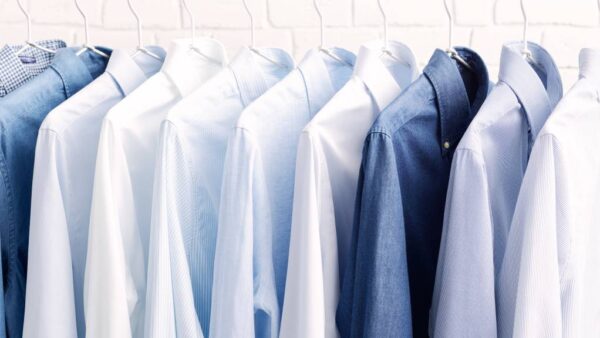
Indian apparel and fashion market in the next five years: Industry growth, challenges and opportunities
The Indian e-commerce site for clothes Myntra just won exclusive distribution rights for the American fashion juggernaut Bebe.
Amazon is launching a fashion store in this nation. In addition, many Indian fashion companies, including Aditya Birla Fashion and Retail, recently secured finance totalling Rs. 2,195 crore from Singapore-based GIC. Biba is planning an IPO.
The scalability of the Indian apparel and fashion marketplaces in recent years, which has made the sector well-known, is the subject of all the news.
It’s interesting to note that the fashion business is anticipated to reach $106 billion in revenue by 2026, putting the Indian fashion market on the map. The development is astounding in everything from toddlers’ clothing to women’s fashion formals! Following this growth, the fastest-growing garment market in the world would probably rank among the top apparel retail markets worldwide.
Here’s what is in store for the Indian apparel and fashion market in the next 5 years.
-
Omnichannel Takes Precedence
The customer experience is everything, not just reaching out to the masses. The aim of multi-channel marketing experiences built by brands in the past was to reach a wide audience. However, omnichannel places more of an emphasis on quality than quantity, which helps companies dominate their marketing campaigns on websites like Instagram and, of course, e-Commerce platforms.
Marketers are now focusing on fewer platforms while enhancing the user experience because they want to go deeper rather than wider. For instance, a strong customer experience on the e-Commerce platform or their own online shop will provide hands-on help with scrollable content and quick access to information about the clothes. This is highly effective in the post-pandemic “back to work” period when women’s formal clothing is becoming more popular, and more companies are showcasing this section on their social media accounts to give viewers a sense of their office attire.
-
Fashion Influencers Take Over
It is challenging to ignore the significance of influencers, notably the micro-influencers who produce more logical and resonant content. Because of their relatability, they have developed a genuine and devoted following that values their fashion and lifestyle judgments.
To have a real presence in the social media community where they are in touch with their customers, brands are looking for this friendship between the two. Social media platforms assist create a more direct link between businesses and consumers, removing barriers to communication. Additionally, it helps a brand become more consumer-friendly and generate new products.
-
Influx of New Technologies
It is only a matter of time until the metaverse becomes a major component of the Indian market as well. The metaverse has already permeated the fashion and apparel business globally. For example, rather than investing time and money in purchasing physical garments, shops can quickly implement virtual fashion to create a hands-on catalogue.
This might be a fantastic fusion of real-world clothing and virtual fashion. This can be effectively used in influencer marketing, where influencers can virtually test the products and aid in word-of-mouth advertising. An influencer working with a company that specialises in office clothing for ladies, for example, will be able to show off several outfits and jackets to demonstrate the variety the company offers.
The fact that web three technology does not contribute to carbon emissions may be another major contributor. Less reliance on resources and more sustainability result from eliminating logistics, hyperproduction, and the deployment of additional equipment.
-
Sustainable Fashion
Sustainability is hot right now, and for a good cause too! Sustainable fashion favours slow production and the use of organic methods, in contrast to fast fashion, which focuses on use-and-throw models without taking rising landfills into account. Several firms are combining solely natural fibres like hemp and jute to make long-lasting items.
The raw materials used in these processes do not consume excessive amounts of natural resources; when discarded, they return to the earth safely.
Such actions benefit traditional communities, many of which are adept at producing sustainable goods and the environment. The Indian economy may benefit from this as well.
The Indian fashion and apparel market declined due to the epidemic, and recovery took some time.
But more than that, new techniques, digital infusions, and development approaches entered the market, which may kick the Indian apparel scene into high gear and make it one of the largest markets in the world. In this case, vengeance shopping was helpful.
Following are the Top 10 Apparels Brands In India 2023
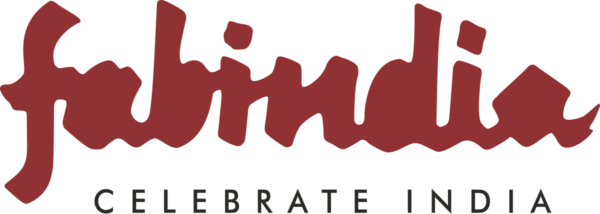
1. FabIndia
An Indian apparel business called Fabindia sells clothing, home goods, fabrics, and cultural items manufactured by local artisans throughout rural India. John Bissell, an American working for the Ford Foundation in New Delhi, founded Fabindia in 1960.
Fabindia first focused on exporting home furnishings until entering the domestic retail market in 1976 with the opening of its first store in Greater Kailash. William Nanda Bissell, the son of John Bissell, serves as the company’s chairman. Fabindia ran 327 locations in India and 14 outlets abroad as of July 2020.
Fabindia generated $65 million in revenue in 2008, a 30% increase from 2007. Through 17 community-owned businesses, of which craftsmen and craftspeople hold some percentage of the shares, Fabindia sources its goods from all around India.
Most of Fabindia’s apparels come from villages, supporting the creation and maintenance of rural jobs in India. Over 40,000 artists and crafters in India currently create them.
The hand-made goods promote excellent craftsmanship.
The Economic Times named Fabindia “Best Retail Brand” in 2004. Fabindia was highlighted in a 2004 CNBC special TV report on India. The Fabindia brand does not use advertising and relies heavily on word-of-mouth marketing. In 2007, the craft-conscious business model of Fabindia was included in a Harvard Business School case study. The Fabric of Our Lives: The Story of Fabindia, written by Radhika Singh, was published in 2010, marking the 50th anniversary of the founding of Fabindia.

2. Mufti
Kamal Khushlani started the men’s clothing fashion label Mufti in 1998. It is situated in Mumbai, India. A loan of 10,000 dollars from Khushlani’s maternal aunt helped launch the business. It produces jackets, blazers, joggers, sweatshirts, sweaters, shirts, and jeans. Credo Brands Marketing Private Limited owns and operates it. It holds 120 big-format stores and 1,400 multi-brand outlets. Kartik Aaryan joined the company as a brand ambassador in July 2018.
Bennett, Coleman & Co. Ltd. and a few of Khushlani’s pals held 35% of the company in 2014, and Khushlani now owns 65% of it. In December 2018, Mufti moved into the footwear industry. Mufti earned the CMAI Brand of the Year Award in 2015 and was named “Retailer of the Year” at the Global Awards for Retail Excellence presented by ET Now and the Asia Retail Congress in February 2019.
In 2018, the company declared it would focus on athleisure apparel and accessories as part of an expansion of its product line.
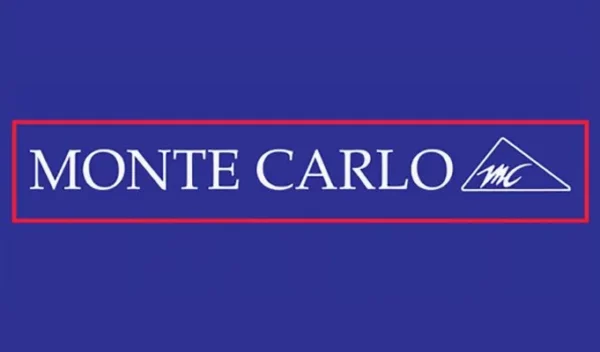
3. Monte Carlo
Oswal Woolen Mills Ltd, the principal business of the Nahar group, established Monte Carlo Monte Carlo Fashions Ltd in 1984. The introduction represented a major development in India’s branded apparel market. Since then, it has been supplying the clothing and fashion industry’s expanding needs.
Monte Carlo has stretched the boundaries of high-street fashion. Apart from woollen knitwear, the items sold under the Monte Carlo brand include T-shirts, shirts, linen shirts, denim, trousers, dresses, shorts, sportswear, and many more for men, women, and tweens (8-14 years age group). The company’s major goal is to meet customers’ expectations with constant quality supported by R&D divisions outfitted with cutting-edge technology, a team of highly qualified technocrats, and adherence to deadlines.
The company was honoured by the International Wool Secretariat with the prestigious Best Exhibited Product award, in addition to receiving ISO 9001: 2000 certifications.
Products from the company are distributed to consumers through various channels, including Exclusive Brand Outlets and Multi Brand Outlets. More than 200 Exclusive Brand Outlets and over 1300 Multi Brand Outlets currently carry Monte Carlo.
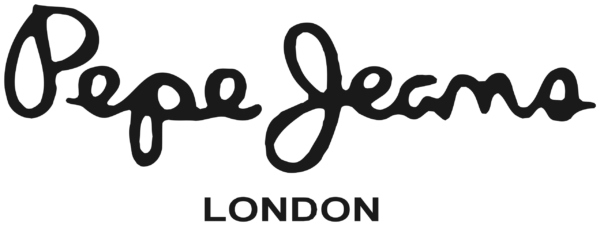
4. Pepe Jeans
A denim and casual wear jeans company called Pepe Jeans London was founded in the Portobello Road neighbourhood of London in 1973. It is now headquartered in Sant Feliu de Llobregat, Spain.
Carlos Ortega, who owns more than 20% of the business, served as CEO.
Three brothers started Pepe Jeans in 1973 by operating a weekend stall at Portobello Road Market in London. They then opened a store on Carnaby Street and entered Europe in the 1980s.
Arun, Nitin, and Milan Shah owned Pepe Jeans in 1988.
The Lebanese M1 Group and the LVMH affiliate L Capital Asia purchased Pepe Jeans and Hackett London (both belonging to the Pepe Jeans Group) in February 2015. Previously, Torreal Funds (31 per cent), Artá Capital (16.4%), L Capital Europe (11.5%), and its managers held these businesses.
Pepe Jeans announced in 2015 that the Norton Clothing brand, which pays homage to the British motorcycle company founded in 1898, would join the Group.
Marcella Wartenbergh was appointed CEO of Pepe Jeans Group in September 2019.

5. Allen Solly
The brand Allen Solly is responsible for the emergence of a completely new consumer class. With its 1993 launch in India, the brand pioneered the “smart casuals” subgenre with its edgy stance, clever communication, and outstanding fashion. Aditya Birla Fashion & Retail Limited’s Madura Fashion & Lifestyle A Division introduced the iconic British brand Allen Solly to India. One of the most well-known apparel brands in India, Allen Solly, received the highest score in its category in the Economic Times Brand Equity study.
With its “Friday Dressing” design concept, Allen Solly is a pioneer for western attire for women in India and redefines work wear in that country. It is the only brand with a major presence for men, women, and children across the nation and has the fastest industry growth rate.
History
William Hollin and Co Ltd. launched Allen Solly in 1744. In the 1990s, a business called Madura Garments purchased the brand. Madura Garments was a division of Madura Coats, a significant producer of threads. Aditya Birla Group purchased Allen Solly in 2001.
In a short period of time, Allen Solly rose to a nearby fashionable position in the fiercely competitive readymade market.
The “Friday Dressing” hit concept was introduced to the market by Allen Solly. Office wear from Allen Solly that had colourful shirts and Khaki pants quickly became popular.
For the brand’s new trend, the tagline “My World, My Way” was created.
Allen Solly initially introduced women’s business apparels in India in 2002.
The kid’s apparel line was expanded in 2013 to include “Allen Sally Junior,” a complete sophisticated young wardrobe for both boys and girls.
In 2014, the Solly Jeans Company was established, and the tennis-inspired lifestyle sports brand Solly Sport was unveiled.

6. Biba
From her home in New Delhi, India, Meena Bindra started the women’s and girls’ apparel company Biba Fashion in 1988. Along with more than 150 brand outlets, it has 225 multi-brand stores. Biba reported 600 crore INR in revenue for the year 2014–15.
Meena Bindra founded the business in 1982 while working out of her New Delhi home. She obtained a loan of 8000 rupees to launch a small business.
Years later, Bindra permitted her sons Sanjay and Siddharth to assist her in running the company. 2010 saw Sanjay part ways with Biba and launch his own clothing company, Seven East.
In 2004 Biba debuted its first independent location in Mumbai’s In Orbit and CR2 malls. In 2007, Kishore Biyani’s Future Group bought a 6.5% interest in Biba. In 2013, Future group sold their holdings in Biba Apparel. 2014 saw Biba Apparels purchase a small share in the fashion house, Anju Modi.
Bollywood fashion
In order to capture the Indian market for Merchandising movie memorabilia, BIBA teamed up with Mukta Arts in 2002 to duplicate designer costumes from four of its films: Taal, Yaadein, Pardes, and Badhai Ho Badhai.
It debuted in Bollywood merchandise with the inclusion of Na Tum Jaano Na Hum, and many additional films, including blockbusters like Devdas, Hulchal, and Baghban, followed.
Collaboration
By acquiring a 51% share in the Indian by Manish Arora brand in October 2012, BIBA partnered with fashion designer Manish Arora. This 2009-launched trendy clothing line provides apparel such as salwar kameez, sarees, lehengas, kurtis, tunics, and T-shirts.
In 2013, BIBA by Rohit Bal, a niche collection created in partnership with Rohit Bal and sold only in a few BIBA locations, was introduced. The needlework, gold and silver cutwork, and beautiful Mughal block print designs were the collection’s key highlights.

7. W
W, a 2001 creation, is a division of TCNS CLOTHING CO. LIMITED. When W began its journey with an intent to deliver fashion in a contemporary retail setting to the Indian woman, the desire of two brothers, Mr. OS Pasricha and Mr. AS Pasricha, became a reality.
They are the only company in the Indian apparel market that provides “Indian contemporary” clothing and keeps up with the latest trends. The newest fashion trends and forecasts from the west are an inspiration for W designers, who were the first to establish the concept of “Mix n Match” in retail. W designers then convert these trends into silhouettes and designs that are appropriate for the modern Indian woman.
Between 2001 and 2002, their first brand store opened its doors in Lajpat Nagar, New Delhi. And as of now, in their 16th year, there are more than 400 stores worldwide. The goal is to expand not just within India but also globally. W’s exclusive brand outlets are currently located in Kathmandu, Mauritius, and Sri Lanka, with plans to expand to other nations.
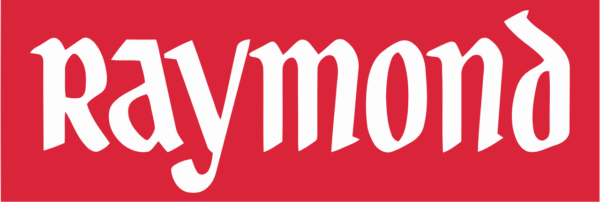
8. Raymond Group
Founded in 1925, the Raymond Group is an Indian reseller of branded apparel and fabrics. It makes suiting fabric and has a 31 million metre capacity for wool and wool blends.
The company owns apparel brands such as Kamasutra, Parx, Park Avenue Woman ColorPlus, Raymond, Raymond Premium Apparel, Raymond Made to Measure, Ethnix, and Park Avenue. All of the products are sold through “The Raymond Shop” (TRS), which operates a network of more than 700 retail locations throughout 200 cities in both India and abroad.
The company is involved in the ready-to-wear apparel, designer clothing, cosmetics and toiletries, engineering files and equipment, prophylactics, and air charter operations.
2019 saw the announcement of Raymonds’ entry into the real estate industry as Raymond Realty. The new business would invest 250 crore (about $36 million) to create mid-income and luxury housing units on 20 acres of land in Thane, a rising suburb of Mumbai. In this area, the Raymond Group owns more than 125 acres of land.

9. Louis Philippe
High-end menswear is produced by Louis Philippe, an Indian-born company. Under the leadership of Saksham Jain and Deepanshu Ranka, it is a division of Madura Fashion & Lifestyle and offers a selection of high-quality designs. It is a division of the Indian conglomerate Aditya Birla Group and was founded in 1989. The company, named Louis Philippe after the French king who ruled from 1830 to 1848, is one of the largest garment manufacturers in India as of 2018.
Louis Philippe publishes The Label, an online fashion apparel and lifestyle publication for men.
It generates more than $150 million in revenue annually.

10. Wrangler
An American company called Wrangler produces workwear and other clothes, including jeans. Kontoor Brands Inc., which owns Lee, is the brand’s owner. Its corporate headquarters are in the heart of Greensboro, North Carolina, and it has manufacturing facilities all around the globe. The Blue Bell Overall Company, which took over Casey Jones in the middle of the 1940s, was the company that produced Wrangler Jeans for the first time. To help create jeans fit for rodeo use, Blue Bell hired Bernard Lichtenstein (“Rodeo Ben”), a Polish tailor from ód who frequently collaborated with cowboys. He persuaded several prominent rodeo riders of the day to support the novel idea.
Men’s jeans with zippers were first made in the 13MWZ style, abbreviated as 13MWZ, in 1947. The business has now created several other lines that are more targeted towards a certain group or demographic, and this concept is still on the market. Riggs, 20X, and Aura are other examples. Additionally, Wrangler sells its apparels to many nations, with Australia and Europe among its top export destinations.
Fans of country music can purchase a line of music accessories from Wrangler.




